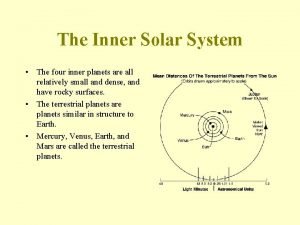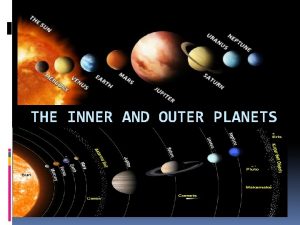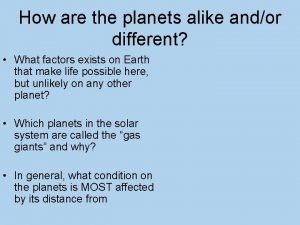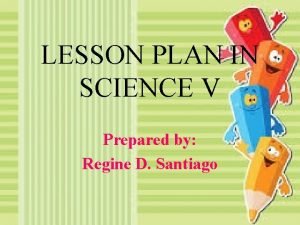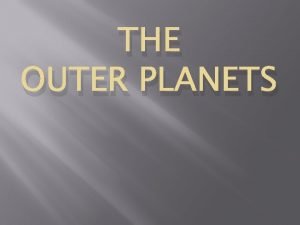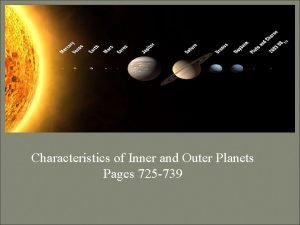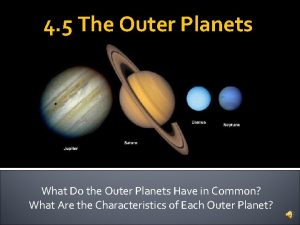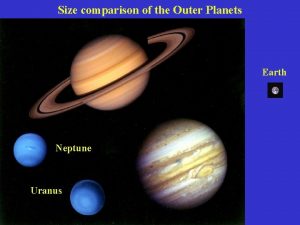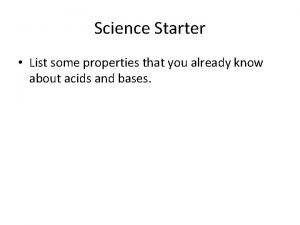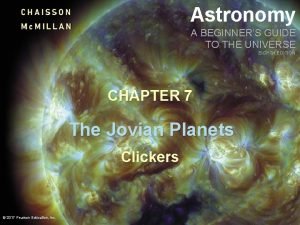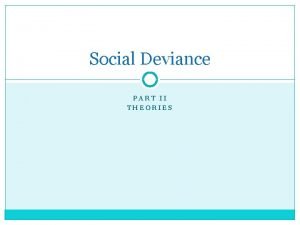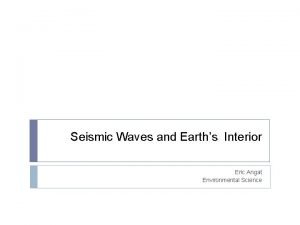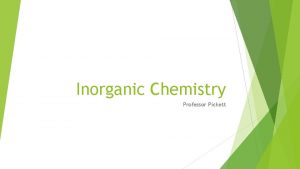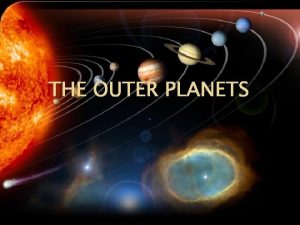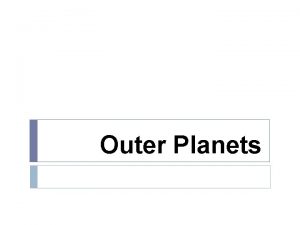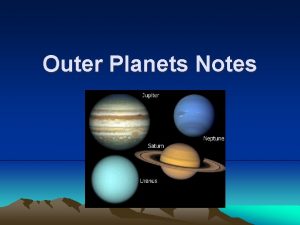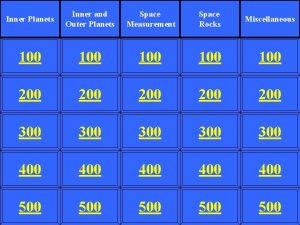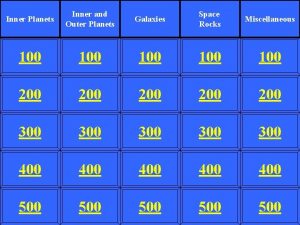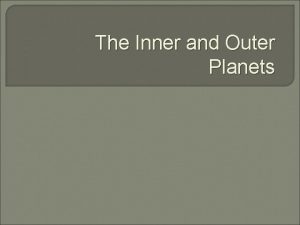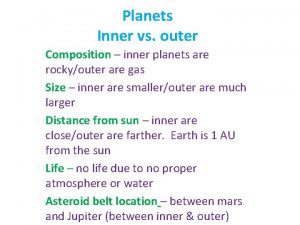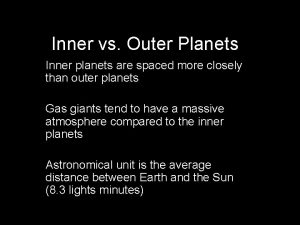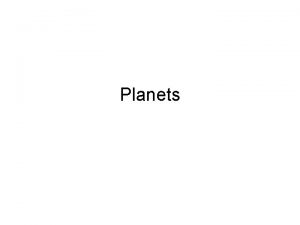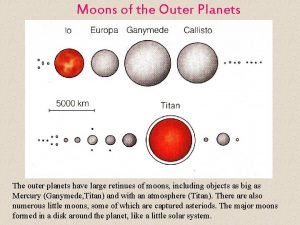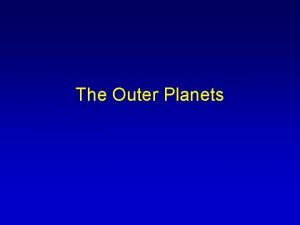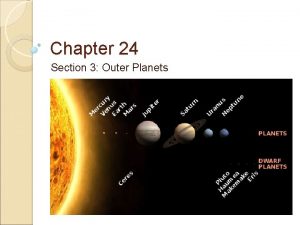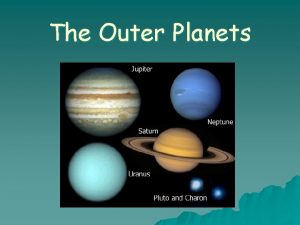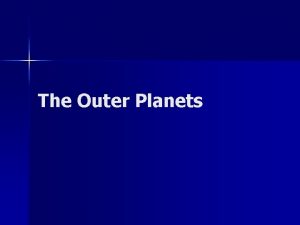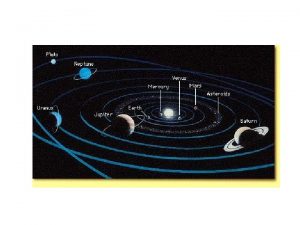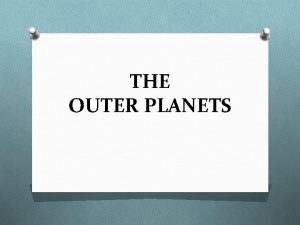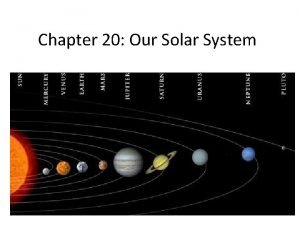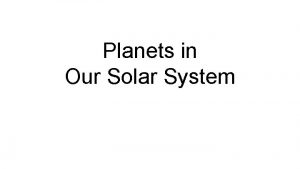The Inner and Outer Planets of Our Solar



























- Slides: 27

The Inner and Outer Planets of Our Solar System

Objectives Identify the basic characteristics of the inner planets and outer planets. Compare the characteristics of the inner and outer planets. Summarize the features which allow Earth to sustain life. Explain why Pluto is different from the other eight planets of Earth.

The Inner Planets • Terrestrial planets: dense planets nearest to the sun; also known as the inner planets. • These planets consist mostly of solid rock and metallic cores. • The number of moons per planet varies from zero to two. • The surfaces of inner planets have bowl-shaped depressions called impact craters, which were caused by collisions with other objects.

MERCURY Mercury, the planet nearest the Sun, is the second smallest planet in our solar system. It is only slightly larger than the Earth's moon. The surface is covered with craters. This tiny planet does not have any rings or moons. Evidence of craters

Mercury Orbital period = 88 days Rotational period = 59 days Large daily temperature range…as high as 427°C during the day, and as low as – 173°C at night.

Venus Second planet from the sun with an orbital period of 225 days. Rotational period = 243 days. Venus and Earth are of almost the same size, mass, and density, but differ greatly in other areas. Venus’s atmospheric pressure is about 90 times the pressure on Earth. Venus’s high concentration of carbon dioxide (96%), results in an average surface temperature of 464°C, compared to Earth’s 15°C

Venus Missions to Venus Volcanoes and lava plains are the most common features. Maat Mons is Venus’s highest volcano, at an elevation of 3 km (about 10, 000 ft. ) Instruments indicated that the surface of Venus is composed of basalt and granite. Venus is covered by a thick layer of clouds, mainly composed of micron-sized droplets of sulphuric acid and other aerosols

Earth is the third planet from the sun, with an orbital period of 365 1/4 days and a rotational period of 1 day Geologic records indicate that Earth’s surface has undergone many changes over the last 250 million years. Earth’s unique atmosphere and distance from the sun allow water to exist in a liquid state. Earth is the only known planet that has the proper combination of water, temperature, and oxygen to support life.

MARS Mars is 50% farther from the sun than Earth, and the 4 th planet in our solar system. Orbital period = 687 days Rotational period =24 hours and 37 minutes Mars seasons are much like Earth’s because its axis tilts at nearly the same angle that Earth does

Mars The pressure and temperature of Mars’s atmosphere are too low for liquid water to exist on the surface of Mars. • Most of the water is trapped in frozen form within polar icecaps, as permanent frost, or in liquid form just below the surface. • Mars even has clouds, but they are very thin. • Surface features on Mars are characteristic of erosion by water, and evidence that liquid water did exist in the past. • It is very cold on Mars, with the average temperature ranging from - 140° C to 20° C.

ASTEROID BELT Most asteroids can be found in the Asteroid Belt: an area of numerous asteroids located between Mars and Jupiter. Asteroids are rocky and metallic objects that orbit the Sun, but are too small to be considered planets. Asteroids range in size from Ceres, which has a diameter of about 1000 km, down to the size of pebbles.

The Outer Planets Gas giants: planets with a deep massive atmosphere, made up of mostly of hydrogen and helium gases and separated from the inner planets by a ring of debris called the asteroid belt. Pluto is not a gas giant and may not have formed in the same way as other planets. Gas giants are larger and more massive than terrestrial planets, but much less dense, and are mainly composed of rock and metal. All four gas giants have ring systems made of dust and icy debris that orbit the planets.

Gas Giants Gas giants: planets with a deep massive atmosphere, made up of mostly of hydrogen and helium gases and separated from the inner planets by a ring of debris called the asteroid belt. • Gas giants are larger and more massive than terrestrial planets, with 15 -300 times the mass, and 4 -11 times the diameter. • Not believed to have solid surfaces.

JUPITER Jupiter, the fifth planet from the Sun, is the largest planet in our solar system. Jupiter is so big that over 1, 000 planets the size of Earth could fit into it. It has over 60 moons and 2 rings. Can life exist on Jupiter's moon, Europa? The “Great Red Spot” Is actually a huge Storm system! Here a few of Jupiter’s moons

Jupiter Hydrogen and helium make up 92% of Jupiter, so its composition is much like the sun Believed to be a failed star, lacking the mass to become a small one Most massive planet in solar system. Rotational period = 9 h and 50 min Takes 12 years to orbit the sun! (Orbital period) Gravity almost 2. 5 times that of the Earth.

Jupiter The red spot is a huge storm that has been continuously going on Jupiter for over 400 years! Winds inside this storm reach speeds of about 338 mph. With a diameter of 15, 400 miles, this storm is almost twice the size of the entire Earth. Period of Rotation = 778. 3 days Period of Revolution = 11. 86 years

SATURN Saturn, the sixth planet from the Sun, is the second largest planet in our solar system. It is often called the ringed planet because many rings of dust and rocks surround it. Saturn also has over 31 moons. Saturn with some of its moons Some of Saturn’s rings Titan is a moon of Saturn that may have some conditions necessary for life! The picture on the right shows an artist’s drawing of how Titan might have looked when the Cassini-Huygen’s probe dropped into its atmosphere in Dec. , 2004.

Saturn 2 nd largest planet in solar system. Rotational period = 10 h and 30 min, so 1 “day” on Saturn is a little over 10 hours long! Orbital period = 29. 5 years, so it takes 29 years to orbit the sun. Almost 10 times larger than Earth. Most visible rings of any planet, which you probably already knew! Period of Rotation = 1, 427 days Period of Revolution = 29. 46 years

URANUS Uranus is a very unusual planet because it sits on its side with north and south poles sticking out the sides. It rotates around this axis, making it look like a ball rolling around in a circle around the Sun. some of Uranus’s moons Black rings

Uranus q 3 rd largest planet in the solar system q Mass is 14. 5 times that of Earth q Orbital period = 84 years q Rotational period = 17 hrs q Uranus has 24 moons and at least 11 thin rings

NEPTUNE Neptune, the eighth planet from the Sun, is a very cold place. Occasionally, Pluto crosses Neptune’s orbit. Its bluish color comes from its atmosphere of methane gas. Tiny Dark Moon

Neptune Rotational period = 16 hrs. It takes 165 years to revolve around the sun! (Rotational period) Has a mass 17 times greater than Earth Has 13 moons

PLUTO Pluto, once the ninth planet from the Sun, is the smallest planet in our solar system if you want to consider it a planet. Some scientists believe that Pluto once was one of Neptune’s moons, and that it pulled out away from Neptune and made its own orbit. Clearest view to date Of Pluto and Charon

Pluto Orbits the sun in an unusually elongated and tilted ellipse. 2/3 rds the size of our moon. Has one moon, Charon. Pluto is composed of frozen methane, rock, and ice The average temperature on Pluto is – 235°C, which is so cold that oxygen and nitrogen in its atmosphere is frozen solid. Only planet not visited by a spacecraft. Pluto takes 248 years to make one orbit around the sun!

New Horizons Pluto Kuiper Belt Flyby q. In recent years, scientists have discovered hundreds of objects in our solar system beyond Neptune’s orbit in the Kuiper Belt q. Some are more than half of Pluto’s size, so scientists think Pluto should no longer be classified as a planet The mission is expected to arrive at Pluto sometime in 2015. q. Kuiper belt: a region of the solar system just beyond the orbit of Neptune, which contains small bodies made mostly of ice


COMETS Comets: a mixture of ices (both water and frozen gases) and dust, which for some reason didn't get incorporated into planets when the solar system was formed. This makes them very interesting as samples of the early history of the solar system. Comets have elliptical orbits. Comet Halley in 1910 When we see a comet, we are seeing the tail of the comet as comes close to the Sun.
 What separates the inner and outer planets?
What separates the inner and outer planets? The inner solar system by leslie
The inner solar system by leslie Inner terrestrial planets
Inner terrestrial planets Solar system inner and outer planets
Solar system inner and outer planets The four inner planets
The four inner planets 4 outer planets
4 outer planets Characteristics of outer planets
Characteristics of outer planets What separates the inner and outer planets
What separates the inner and outer planets How are the inner planets alike
How are the inner planets alike Inner outer planets venn diagram
Inner outer planets venn diagram Inner critic inner defender inner guide
Inner critic inner defender inner guide How are terrestrial planets different from jovian planets?
How are terrestrial planets different from jovian planets? Inside pluto planet
Inside pluto planet Jupiter and saturn are noticeably oblate because:
Jupiter and saturn are noticeably oblate because: Solar system characteristics
Solar system characteristics What do all the outer planets have in common
What do all the outer planets have in common Characteristics of outer planets
Characteristics of outer planets Outer planets
Outer planets Outer planets
Outer planets Characteristics of outer planets
Characteristics of outer planets Saturn is noticeably oblate because
Saturn is noticeably oblate because The brittle, rocky outer layer of earth
The brittle, rocky outer layer of earth The strong lower part of the mantle
The strong lower part of the mantle Inner and outer controls work against deviance
Inner and outer controls work against deviance Which type of wave can penetrate the outer and inner core *
Which type of wave can penetrate the outer and inner core * Inner and outer sphere mechanism
Inner and outer sphere mechanism Inner and outer forces
Inner and outer forces Characteristics of inner and outer beauty
Characteristics of inner and outer beauty




